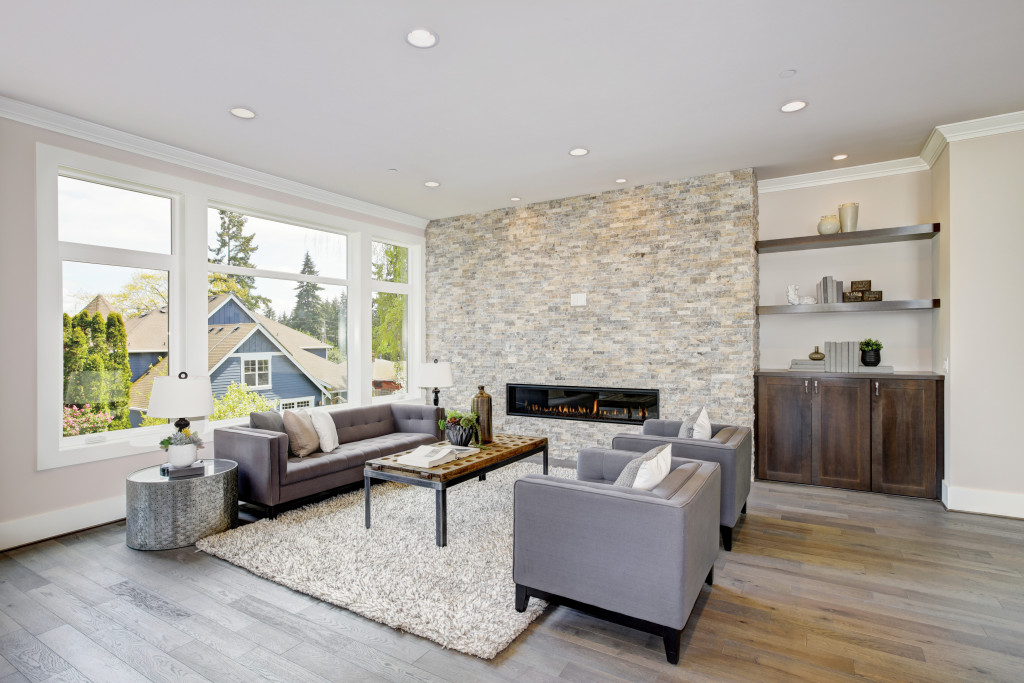- Improve indoor air quality with houseplants, natural cleaners, frequent filter changes, and aeration.
- Maximize natural light in your living room by opening curtains and upgrading windows.
- You can minimize noise pollution with sound-absorbing elements and soundproofing if needed.
- Choose healthy, ergonomic furniture and incorporate exercise elements into your living room setup.
The living room is the heart of the home. It’s where you relax after a long day, enjoy time with family and friends, and often spend most of your downtime. However, it’s also a space that can negatively impact your health if you don’t optimize it properly. From air quality to lighting, there are simple changes you can make to transform your living room into a healthier space. This blog will share essential tips to optimize your home’s living room for better health.
Improve Air Quality
Most people aren’t aware of the indoor air quality in their homes, but it’s essential to keep it clean and fresh. There are plenty of things you can do to improve the air quality in your living room. Here are four ideas to get you started:
Invest in houseplants.
Houseplants are not only aesthetically pleasing, but they also act as natural air purifiers by filtering out toxins and producing fresh oxygen. Some of the best air-purifying plants include spider plants, peace lilies, and snake plants.
Use natural cleaning products.
Many cleaning products have harmful chemicals that can adversely impact your health. Opt for natural cleaning products or make your own using ingredients like vinegar, baking soda, and essential oils.
Regularly change air filters.
Air filters in HVAC systems need to be changed regularly to maintain good air quality. Make it a habit to replace them every three months or more often if you have pets or live in an area with high pollen levels.
Keep windows open.
Opening your windows for a few minutes each day can help circulate fresh air and improve air quality. However, if you live in a polluted area, it’s best to keep them closed during peak pollution times. You can also use an air purifier to help remove pollutants from the air.
Air quality is essential for overall health, and these simple tips can help ensure that your living room has good air circulation and contains minimal pollutants.
Bring in Natural Light

Natural light is crucial to your health and well-being, so it’s essential to maximize it in your living room. Open curtains and blinds during the day and avoid using artificial light as much as possible. You can also upgrade your windows to allow more natural light inside.
Choose windows with low-E coating to minimize UV rays and prevent furniture from fading, and employ the help of a professional window installation service provider to ensure proper installation. They can also recommend energy-efficient options to help reduce your electricity costs. Not only does natural light improve your overall health, but it also boosts your mood and energy levels.
Reduce Noise Pollution
Excessive noise in your living room can lead to anxiety, stress, and even hearing loss. It’s essential to minimize noise pollution and keep your living room as tranquil as possible. Add sound-absorbing elements like an area rug, curtains, or upholstered furniture to reduce echoes and dampen noise. Add soundproofing panels to the walls if outside noise is an issue, or invest in double-glazed windows.
Consider Your Furniture
The furniture in your living room can have a significant impact on your health. Choose pieces that are comfortable and supportive, and avoid anything that strains or stresses your body. Consider ergonomic chairs and sofas that promote good posture and provide proper support. High-quality natural materials like hardwood, cotton, and wool can improve air quality and reduce chemical exposure.
Incorporate Exercise Elements

Incorporating exercise equipment into your living room can be a great way to stay active and healthy, especially during times of inclement weather or social distancing. Consider investing in a stationary bike, yoga mat, or resistance band set to create your exercise studio at home. You can also incorporate active hobbies like dancing or fidgeting gadgets like pedaling while working.
Turning your living room into a health-optimized space is not as daunting as it may initially seem. These simple steps, from improving air quality and lighting to considering your furniture and reducing noise pollution, can significantly affect your physical and mental well-being.
Remember, your living room is one of the most vital spaces in your home, and it holds the power to enhance your health and uplift your mood significantly. So, invest in its transformation and make your living room a sanctuary of well-being that supports your health every single day.

